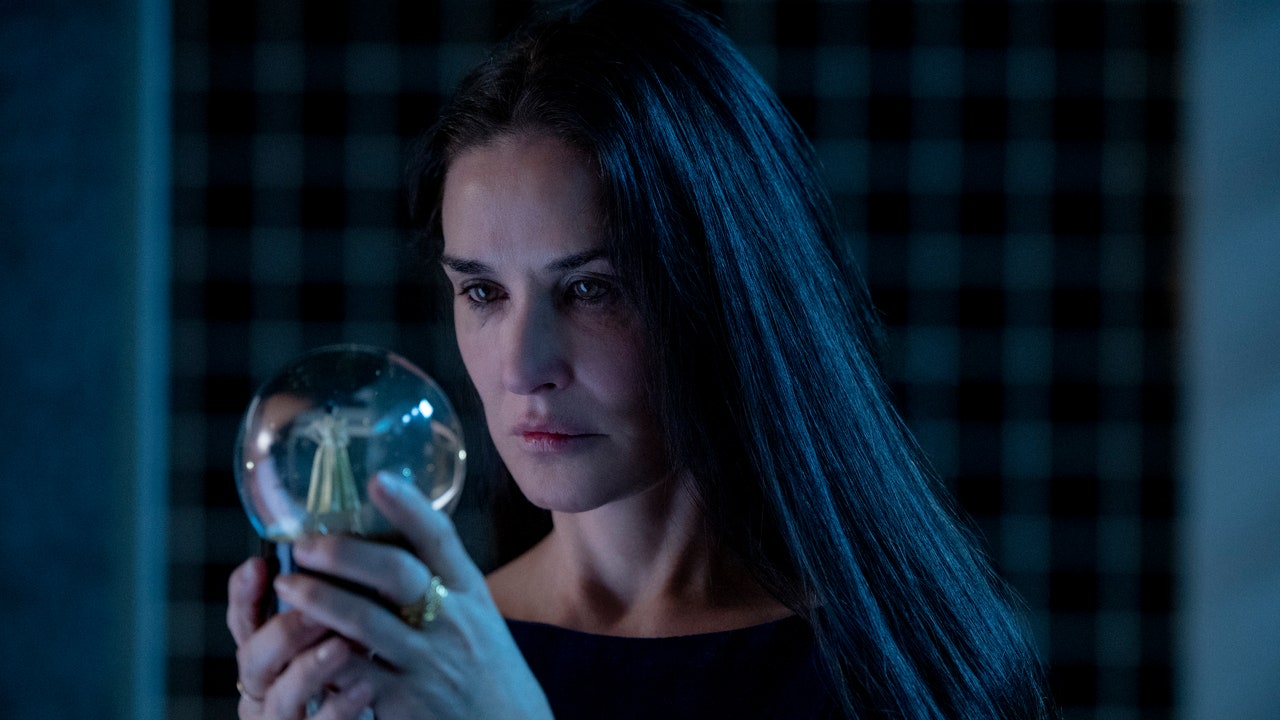In a recent cinematic venture, Demi Moore graces the big screen with an engaging portrayal of a fading TV actress, Elizabeth Sparkle, in the new film, “The Substance.” The narrative ingeniously mocks the unending pursuit of eternal youth and critically examines the harshness of a beauty culture that shuns aging, leaving ample room to explore its implications.
In the movie, Elizabeth Sparkle, on the brink of losing her popularity at 50, is offered a peculiar opportunity. She is introduced to ‘The Substance,’ a chemical elixir that promises to restore her fertility. However, this is no ordinary fertility – it doesn’t lead to the birth of an infant, but results in the creation of a fully-formed and youthful human being in her prime reproductive years.
The inexplicable transformation occurs amidst a somewhat gruesome scenario – with Elizabeth, in immense pain, generating her younger doppelgänger, Sue, played by Margaret Qualley. The unique proposition allows each woman a shot at life for two weeks, after which the other slips into a coma-like state, effectively sustaining the effect of the ‘The Substance.’
Defying coherent interpretation, the instructions accompanying ‘The Substance’ repeatedly affirm that the women are not two separate entities, but rather, one. Despite having individual egos and ambitions, they are considered a single entity by the transformative chemical.
This interpretation, however, seems disconcerting given the contrast in their experiences. While Sue relishes her fortnight of triumph, replacing Elizabeth on her TV show, existent benefits for Elizabeth remain questionable. Underneath the surface, it seems the overarching agenda is to satirize the societal fixation on youth and appearance.
The fallout of such an obsession with eternal youth, as suggested by the film, is a distinctly gruesome turn of events. The storyline veers towards a gory climax, leaving the audience contemplating what one really gains in the quest for eternal beauty and youth. The answer appears to be a rash of public scorn, the humiliation, and an intense, graphically presented gore.
In an overarching frame, the movie showcases society’s condescending outlook towards women. However, this perspective seems somewhat distorted and devoid of serious and pragmatic implications on women’s emotional and physical health. It further calls out the obsessive pursuit of unattainable physical perfection, which is perpetuated by our beauty-obsessed culture that depreciates the value of women past their reproductive prime.
The relentless pursuit of youth and youthful beauty is symptomatic of inherent societal misogyny. However, the film’s depiction of this reality through brutal, nerve-wracking violence may not align with reality. Women are far more resilient, wise, and capable than depicted here, often overcoming real-life misogyny with grace and strength. As such, the film tends to emphasize internalized self-destruction more than empowerment, causing it to feel like a typical thriller rather than a thought-provoking satire on societal norms.
In conclusion, “The Substance” audaciously addresses the societal obsession with youthful beauty and the fear of aging, but it does so through a lens smeared with exaggerated gore and violence. It attempts to incite a debate on societal beauty standards and their effects but loses its impact amidst the visceral theatrics. It is an intriguing endeavor that sparks conversations, but the chaotic narrative overshadows the profound underlying message.





